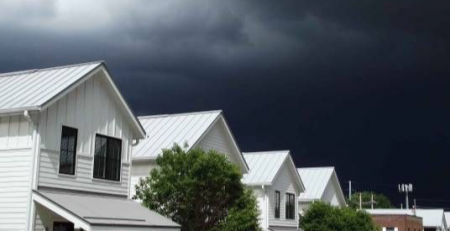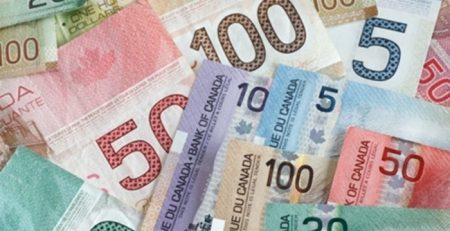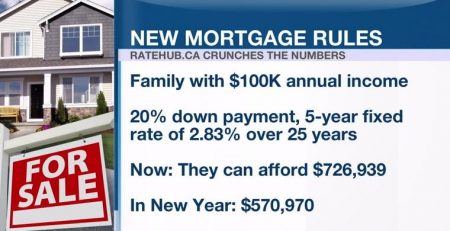Buying a home in Canada is suddenly substantially more affordable — but there’s a catch
[Financial Post – October 1, 2020]
Don’t expect the income boost we’ve been seeing to last
Buying a home in Canada hasn’t been this affordable in four years, but there’s a catch — actually more than one.
According to RBC Economics’ Housing Affordability Measure out this week the proportion of income Canadians need to meet housing costs (mortgage, taxes, utilities) fell 3.3 percentage points to 47.3% in the second quarter, the most affordable since 2016.
Substantial improvements were evident from coast to coast with an average buyer now able to afford an average home in most markets, though the most expensive cities Victoria, Vancouver and Toronto remain the exception.
Even these cities though recorded the largest declines on the measure (which means homes got more affordable) and “decade-strong drops took place in virtually all markets we track,” said RBC senior economist Robert Hogue.
But the catch to this new-found affordability is that it is rooted in the federal government’s unprecedented income support during the coronavirus pandemic.
The $56 billion Canadians received through government aid programs in the second quarter was more than the $23 billion they lost in wages because of COVID-19, said Hogue and this has distorted the housing affordability picture. Household disposable income leapt 11% and that income rise alone shaved 3.5 percentage points off the affordability measure. Lower mortgage rates and a slight drop in the cost of utilities also helped affordability, though gains were somewhat offset by higher home prices.
Without that surge in income, affordability would have worsened, and for that reason RBC expects the relief will be short-lived. “Everything else being equal, a return to pre-pandemic income levels would effectively roll back all of last quarter’s substantial gain in affordability,” said Hogue.
So what does this mean for the housing market?
Hogue said the improvement in affordability “no doubt greased the wheels” of housing’s stunning rebound this summer. In August average home prices in Canada soared almost 20% and sales spiked 33% from the same month last year.
But the pandemic is changing the housing market in other ways too.
Working from home and a decline in the appeal of big cities because of social distancing “are increasingly driving buyers further away from downtown locations into suburbs, exurbs and even cottage country,” said Hogue.
Demand for rentals in urban centres is declining, and this is cooling investor interest in condos, he said. A growing desire for homes with more space is also hitting condo sales and shifting demand to single and semi-detached homes.
“The bottom line is we expect condo prices to weaken in larger markets next year, while we see prices for single-detached homes remaining generally resilient — albeit increasing at a slower pace. “
These trends were particularly noticeable in Toronto and Montreal.
At 64.5% income needed to support a home, Toronto is the second worst for affordability in the country, only behind Vancouver. Changing housing preferences have seen a boost in demand for single-family homes, the least affordable category, pushing prices up even further. Meanwhile, the supply of urban condos for sale has increased.
Montrealers also are increasingly migrating to the suburbs, said Hogue. Buyers looking for bigger homes with a yard have been snapping up properties in Laval and on the north and south shores, and more condo owners on the Island are selling. Affordability here is at 40.5% despite rising prices, but Hogue said that is unlikely to be sustained.
Canada’s economy continues to heal but the pace of the recovery is slowing significantly. Data revealed Wednesday. that GDP gained 3% in July after surging 6.5% the month before, but preliminary estimates put August’s growth at an even slower 1%. Despite the gains GDP remains 6% below what it was in February before coronavirus hit. And some areas directly impacted by pandemic restrictions, such as accommodation and food services, are still 33% below pre-pandemic levels. TD senior economist Sri Thanabalasingam said the slowing and uneven growth are signs that the Canadian economy is shifting from the rebound phase to a more challenging stage of the recovery. “From here on in, the journey to “normal” could see temporary stalls and bouts of turbulence,” he said.
The emergency program that kept Canadians afloat during the pandemic has finally ended, leaving millions fumbling for the next financial lifeline. The Canada Emergency Response Benefit (CERB) runs out when you’ve received 28 weeks of payments, or on Oct. 3, whichever comes first.
In place of CERB, the government has announced a $37-billion transition plan to make Employment Insurance (EI) more accessible — and create three new benefits to help those who still don’t qualify. Our content partner MoneyWise walks you through the new programs and what you need to do to get on board.











